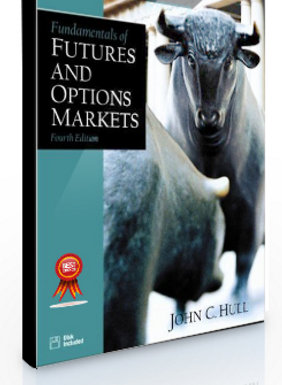John C.Hull – Fundamentals of Futures & Options Markets (4th Ed.)
Price: $25
Please contact us: – Email: Tradersoffer@gmail -Skype: [email protected]
For undergraduate courses in options and futures.This introduction to futures and options markets is ideal for those with limited background in mathematics. Based on Hull’s Options, Futures and Other Derivatives, one of the best-selling books on Wall Street and in the college market, this text offers an accessible presentation of the topic without the use of calculus.
This book has been written for undergraduate and graduate elective courses offered by business, economics, and other faculties. Many practitioners who want to acquire a working knowledge of futures and options markets will also find the book useful.
I was persuaded to write this book by colleagues who liked my other book
Options, Futures, and Other Derivatives, but found the material a little too advanced for their students.
Fundamentals of Futures and Options Markets (formerly
Introduction to Futures and Options Markets) covers some of the same ground as
Options, Futures, and Other Derivatives—but in a way that readers who have had limited training in mathematics will find easier to understand. One important difference between this book and my other one is that there is no calculus in this book.
The text can be used in a number of different ways. Instructors who like to focus on one- and two-step binomial trees when valuing options may wish to cover only the first 10 chapters. Instructors who feel that swaps are adequately covered by other courses can choose to omit Chapter 6. There are many different ways in which Chapters 11 to 21 can be used. Instructors who feel that the material in Chapters 14, 16, 17, or 18 is too specialized can skip one or more of these chapters. Some instructors may choose to devote relatively more time to futures and swaps markets (Chapters 1 and 6); others may choose to structure their course mostly around options markets (Chapters 7 to 21). The three new Chapters (19 to 21) contain very little mathematics and do not rely heavily on earlier material. I find they work well when used in the last two to three weeks of a course regardless of what, is covered earlier.
Chapter 1 provides an introduction to futures and options markets and outlines the different ways in which they can be used. Chapter 2 describes the mechanics of how futures and forward contracts work. Chapter 3 shows how forward and futures prices can be determined in a variety of different situations by using pure arbitrage arguments. Chapter 4 discusses how futures contracts can be used for hedging. Chapter 5 deals with interest rate markets. Chapter 6 covers swaps. Chapter 7 describes the mechanics of how options markets work. Chapter 8 develops some relationships that must hold in options markets if there are to be no arbitrage opportunities. Chapter 9 outlines a number of different trading strategies involving options. Chapter 10 shows how options can be priced using one- and two-step binomial trees. Chapter 1 I discusses the pricing of stock options using the Black-Scholes model. Chapter 12 extends the ideas in Chapter 11 to cover options on stock indices and currencies. Chapter 13 extends the ideas in Chapter 11 to futures options. Chapter 14 discusses volatility smiles. Chapter 15 provides a detailed treatment of hedge parameters such as delta, gamma, and vega. It also discusses portfolio insurance. Chapter 16 explains how to calculate and use the value-at-risk measure. Chapter 17 covers the use of multistep binomial trees to value American options. Chapter 18 focuses on interest rate options. Chapter 19 covers exotic options, mortgage-backed securities, and nonstandard swaps. Chapter 20 covers some relatively new derivative products: credit derivatives, weather derivatives, energy derivatives, and insurance derivatives. Chapter 21 describes some well-publicized derivatives disasters and reviews the lessons we can learn from them.
At the end of each chapter (except the last one) there are seven quiz questions that students can use to provide a quick test of their understanding of the key concepts. The answers to these are at the end of the book.

